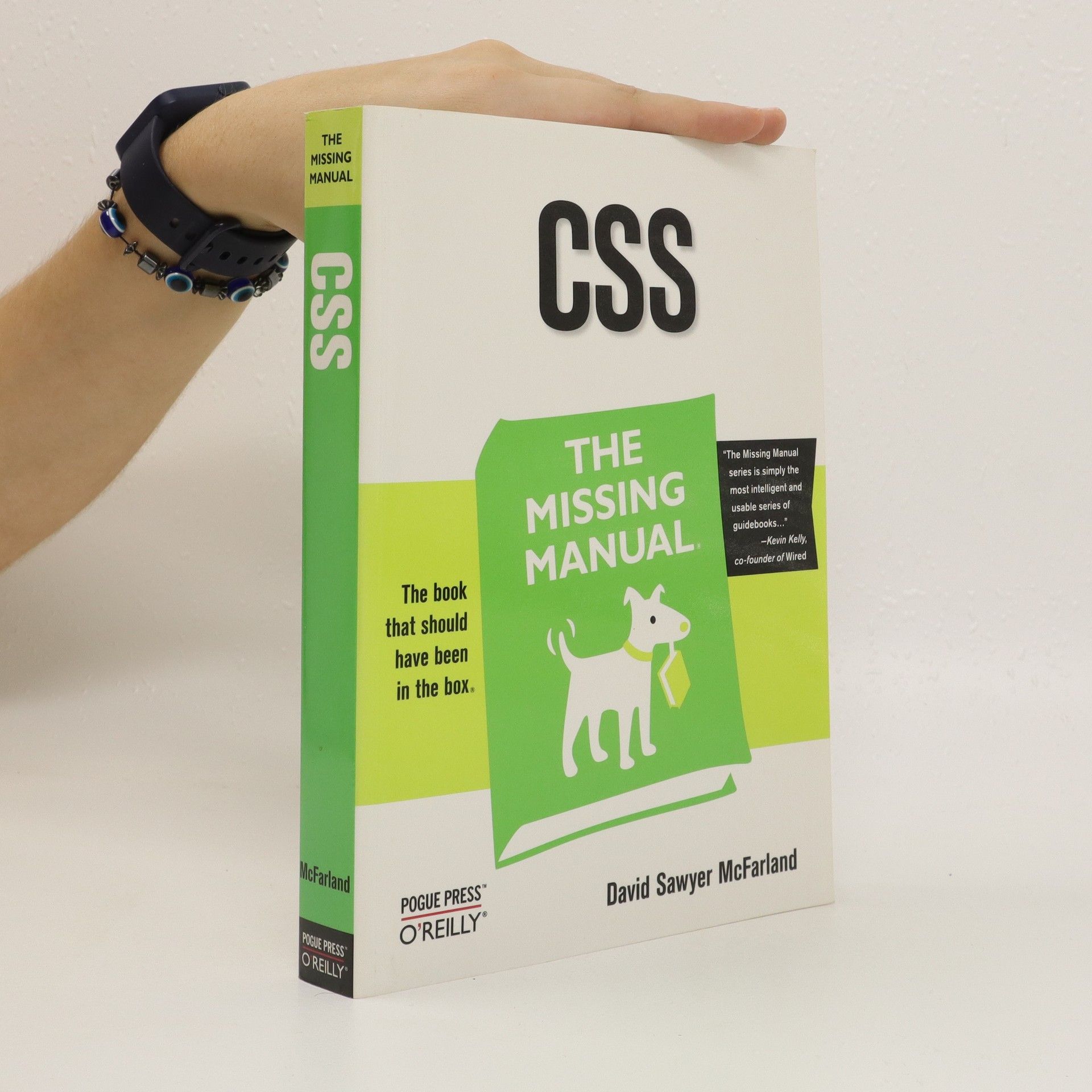Die Zeiten, als Websites allein aus Texten und Bildern bestanden, sind längst vorbei. Nutzer von Webangeboten erwarten inzwischen nutzerfreundliche Formulare, eine elegante Navigation, Bookmark-fähige Stadtpläne oder interaktive Fotogalerien. Hinter vielen dieser Features verbirgt sich JavaScript – ein guter Grund also, sich mit der beliebtesten Skriptsprache des Webs zu beschäftigen. Dieses Buch vermittelt auf verständliche Art den Aufbau und die Arbeitsweise der Sprache und richtet sich explizit an Nicht-Programmierer, die ihren Sites Interaktivität einhauchen wollen. Sie lernen die Vielfalt interaktiver Elemente kennen und erfahren, wie Sie sie konkret in JavaScript entwickeln.
David Sawyer McFarland Bücher
David Sawyer McFarland ist ein Autor und Trainer mit umfassender Erfahrung in der Webentwicklung und Content-Erstellung. Seine Arbeit konzentriert sich auf praktische Aspekte von Webtechnologien und vermittelt den Lesern Fachwissen und Anleitungen. Durch seine Schriften teilt er seine langjährige Expertise im Aufbau und der Programmierung von Websites für eine Vielzahl von Kunden. Seine Lehrtätigkeit und Publikationen spiegeln sein Engagement wider, andere im Bereich der digitalen Medien zu schulen.






CSS - The Missing Manual, 4e
- 693 Seiten
- 25 Lesestunden
CSS lets you create professional-looking websites, but learning its finer points can be tricky-even for seasoned web developers. This fully updated edition provides the most modern and effective tips, tricks, and tutorial- based instruction on CSS available today.
CSS
- 494 Seiten
- 18 Lesestunden
Now that Cascading Style Sheets (CSS) have finally come of age, web designers can take complete control of the appearance of their web pages. This text clearly explains this powerful design tool and how to use it.
Duet nie do pokonania! JavaScript to język, którego początki sięgają lat dziewięćdziesiątych XX wieku. Po początkowych problemach, gdy był masowo blokowany przez użytkowników, obecnie przeżywa swój najlepszy okres. Trudno wyobrazić sobie bez niego nowoczesną aplikację internetową. Niewątpliwie duży wpływ na wzrost popularności JavaScriptu miała biblioteka jQuery, która usprawniła korzystanie z tego języka. Ta książka to wyjątkowy podręcznik prezentujący możliwości niesamowitego duetu JavaScript – jQuery. Sięgnij po nią, a zagwarantujesz sobie godziny pasjonującej lektury i odkrywania składni języka, typowych konstrukcji oraz najlepszych technik tworzenia programów. Ponadto dowiesz się, jak sprawnie manipulować obiektami w drzewie DOM, reagować na zdarzenia oraz wymieniać informacje z serwerem za pomocą żądań AJAX. Na sam koniec zdobędziesz bezcenną wiedzę na temat diagnozowania problemów ze skryptami, korzystania z dokumentacji jQuery oraz przechowywania danych w magazynie lokalnym użytkownika. Książka ta jest obowiązkową lekturą dla każdego webdevelopera!Spraw, by Twoje strony żyły. Korzystaj z jQuery, żeby tworzyć interaktywne elementy reagujące na poczynania użytkowników. Poznaj jQuery UI. Rozbuduj tworzone interfejsy użytkownika stosując grupy kart, okna dialogowe, widżety do wyboru daty i tak dalej. Wyświetlaj ładne i użyteczne formularze. Pobieraj informacje od użytkowników, pomagaj klientom w zakupach i zapewniaj członkom społeczności możliwość dzielenia się przemyśleniami. Wyjdź poza ramy przeglądarki korzystając z technologii Ajax. Komunikuj się z serwerem WWW, by aktualizować strony bez ich odświeżania. Zastosuj swoje nowe umiejętności w praktyce. Krok po kroku twórz nowe aplikacje, korzystając przy tym z jQuery i widżetów jQuery UI. Poznawaj zaawansowane zagadnienia. Korzystaj z narzędzia ThemeRoller by dostosowywać wygląd widżetów; unikaj popularnych błędów, które programiści często popełniają. Wykorzystaj w pełni możliwości współczesnych przeglądarek internetowych!
CSS : chybějící manuál : tvorba nádherných webových stránek prostřednictvím CSS
- 432 Seiten
- 16 Lesestunden
Jste-li tvůrce webových stránek, pak jistě dobře víte, že CSS, aneb kaskádové styly, umožní vašemu vnitřnímu kreativnímu já se projevit a hrát si. Ovšem kombinace CSS a HTML je těžká práce a často frustrující a komplikovaná, což většinu webdesignérů vede k tomu, že vynechají ty nejlepší vlastnosti této kombinace. Kniha, jíž právě držíte v ruce, vám díky živým příkladům a tutoriálům umožní poznat techniky a pracovní postupy skutečných profesionálů, které používají k dosažení těch vizuálně nejdokonalejších layoutů. A nejen to, nemusíte být žádný specialista, protože vše s vámi autor mnoha bestsellerů projde do detailů tak, aby vám nic z webové tvorby nezůstalo skryto, a to takovým způsobem, aby se vaše stránky uměly správně zobrazovat ve všech prohlížečích - včetně nejnovější verze Internet Exploreru 7.